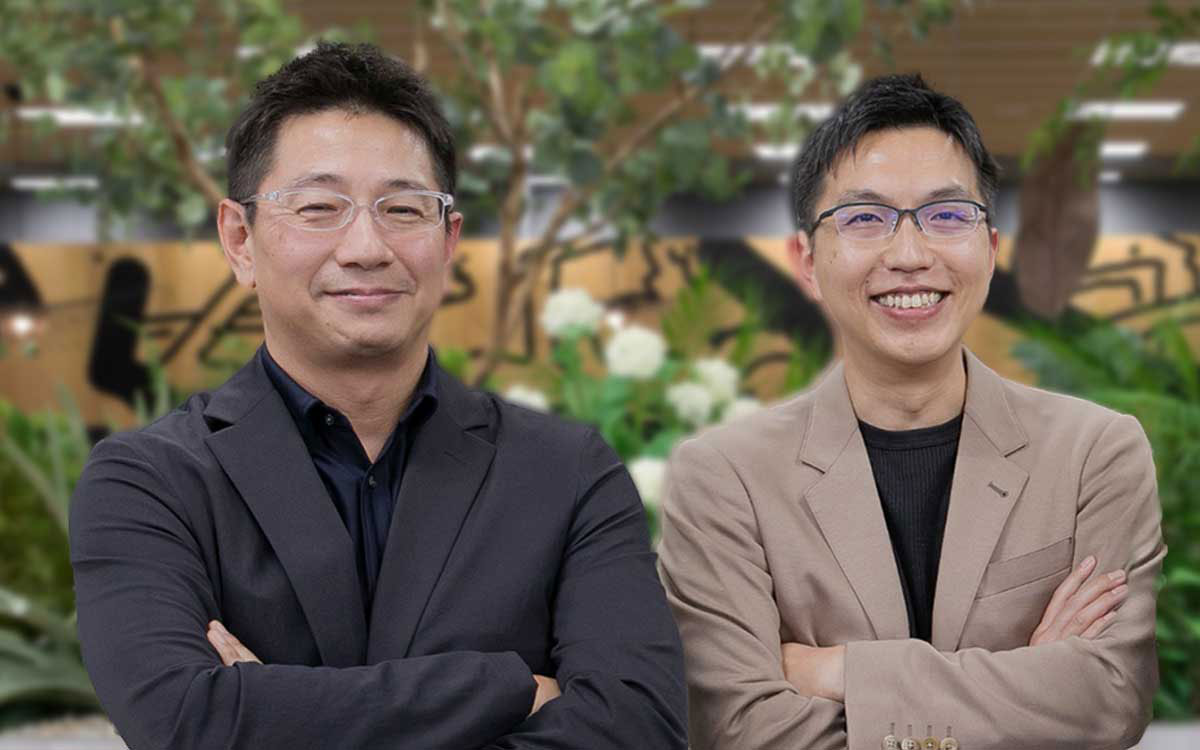Fujitsu undertakes DX to reform disorganized Service Desks to improve Employee Satisfaction (ES)
Fujitsu / July 7, 2023
To compete in today’s market and continue to offer new value to customers on a global scale, organizations need to undertake their own digital transformation (DX). Fujitsu is no different, and although DX is at the heart of our own transformation, we recognized an increase in the number of inquiries and issues raised regarding our evolving internal IT estate. The decision was made to develop a system to quickly respond to support requests, so IT can empower employees to focus on their work. For this article, we interviewed project manager Toshio Ima and Yuki Yanagi, who is leading the system design, about the challenge of building a single service desk through standardizing operations that supports over 500 systems.
Contents
- Reforming internal IT support operations for intuitive user experiences and to enhance knowledge sharing
- IT Support Best Practices with the introduction of ServiceNow ITSM
- Promoting IT support transformation while highlighting the benefits of implementation
- Problem-solving time reduced by 40% and a continued commitment to reducing incident response time
Reforming internal IT support operations for intuitive user experiences and to enhance knowledge sharing
Fujitsu is working on various DX projects to transform itself. As a part of this, we reformed our IT support operations to improve how we handle employee support requests relating to our internal IT systems.
For many years, Fujitsu’s business systems, shared services, and internal IT infrastructure used by employees were designed, deployed, operated, and maintained by individual departments, with siloed support teams handling requests and troubleshooting in isolation. Over 500 IT systems were being supported across these discrete support teams.
This led to several issues in how we were able to handle requests within IT support operations which we needed to address. The first is to improve convenience for employees. Toshio Ima, Senior Director of the Cloud Services Division, said, “Until now, we did not have a consolidated portal to accept support requests from employees in a centralized manner; users had to submit support requests through separate systems and processes for each system separately. Employees complained that they did not know how to raise requests or that they had to spend time before receiving support because they initially contacted the wrong support desk.”

Toshio Ima, Senior Director, Digital System Platform Unit, Cloud Services Division, Fujitsu Ltd.
In addition, support and troubleshooting were mainly requested by email, and this took time because it required several rounds of communication from inquiry to resolution, or in some cases emails could be overlooked.
On the other hand, the support staff also had to manage requests received via email by manually posting them to Excel or a bespoke on-premise incident management system. We recognized the challenges this created and the urgent need to improve operational efficiency.
Sharing knowledge about incidents was also raised as a key issue. Although information on problems that occurred in each system and support measures were accumulated, the insight gained from this could not be readily shared across departments. “If common infrastructure or middleware are used, it is quicker and easier to identify incidents occurring due to similar causes, and therefore resolve these issues quicker by taking similar measures even if the systems impacted are different. However, such information was not shared among the departments,” Ima recalls.
Additionally, IT support know-how was dependent on individual skills. This created further challenges due to the discontinuation of skill transfer due to the retirement of experienced employees, and the increase in operation and maintenance costs due to multiple service desks existing in each department.
“As internal IT support operations are expected to become even more complex in the future, we felt it was necessary to reform our operations based on IT Service Management (ITSM) to resolve these issues,” said Ima.
IT Support best practices with the introduction of ServiceNow ITSM
The reform of IT support operations was underpinned by the company’s commitment to DX, as a part of the OneFujitsu Program introduced in 2020. This program aims to standardize and optimize business processes, data, and IT software across the global Fujitsu group to realize data-driven management and operational excellence(*1). Based on this program, the Cloud Services Division undertook a project to reform internal IT support operations, underpinned by leading technology, with four goals:
(1) deliver better user experiences
(2) reduce operational workload
(3) enable skills transfer for maintenance and operation staff
(4) reduce the complexity of problems
(*1)Operational excellence: Building and thoroughly refining its competitive advantage by increasing the effectiveness and efficiency of its value-creating business activities.
In addition, the following basic policies for systemization were formulated:
(1) one business system for one domestic/global group
(2) one system and one instance for the domestic/global group
(3) cloud first
(4) standardization and optimization of operations by consolidating operational support
Several tools were compared and examined at this point. As a result, Fujitsu selected ServiceNow ITSM as the system to underpin its transformation. We chose the platform because it aligns with our cloud-first policy and enables us to deploy a single system that can be used both domestically and globally. “In addition, by utilizing ServiceNow ITSM’s workflows and features, which are based on ITSM best practices, including Information Technology Infrastructure Library (ITIL), we recognized that we could deliver state-of-the-art standardized IT support globally,” Ima explains.
Yuki Yanagi, Manager of the Cloud Services Division, also commented, “The fact that we were already using ServiceNow ITSM in some departments in Japan and in several overseas regions also helped us to introduce it as our single, consolidated system.”
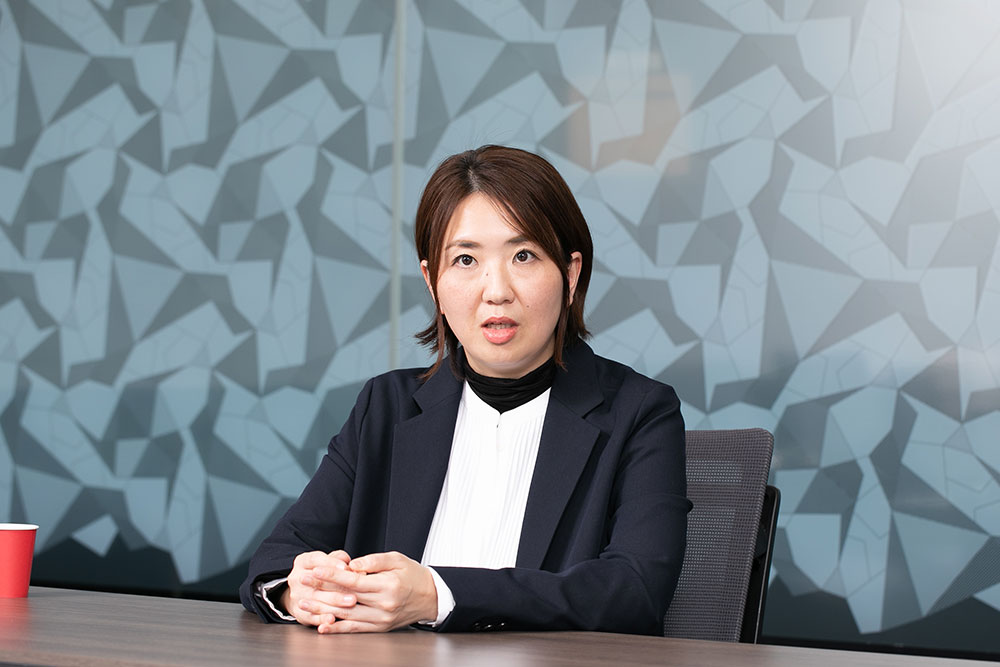
Yuki Yanagi, Manager of the Cloud Services Division, Digital System Platform Unit, Fujitsu Ltd.
Promoting IT support transformation while highlighting the benefits of implementation
Fujitsu’s project to implement the new system started in 2020. A system called Global Communication Infrastructure was introduced for approximately 80,000 employees initially as a pilot to provide common company-wide services. The eight functions covered by ITSM were introduced in three phases:
Phase 1: Service Portal and Incident Management
Phase 2: Request Management, Problem Management, Knowledge Management and Change Management (Release Management)
Phase 3: Configuration Management and Event Management
One of the challenges in the implementation was to change the processes that were designed for individually optimized IT support operations into procedures based on ServiceNow ITSM’s standardized capabilities. Yanagi recalls, “Although we had hoped to use ServiceNow ITSM functions out-the-box through fit to standard(*2), we received many comments and requests, such as ‘we don’t want to change our current operations’ and ‘we want it customized so that current functions can be used.’”
(*2)Fit to standard: Introduction method of changing business operations to fit to the system without additional development.
“To address these concerns, we held workshops and briefings sessions. We also held weekly meetings to continually share information and build trust with the departments concerned to reach a consensus,” Yanagi said.
As for the knowledge sharing, we focused on creating a mechanism to consolidate information related to incidents and support held by each department into the new system. Specifically, we have created a format that allows existing knowledge to be registered in ServiceNow ITSM by batch, reducing the burden on users.
Problem-solving time reduced by 40% and a continued commitment to reducing incident response time
About 80 service desks have been migrated to the new system, and we are already realizing several benefits. One is the improvement in user experience. By simplifying IT support contact points into a single service portal named Ask IT, “we have received positive feedback from users that they know the contact point for their inquiries now,” Yanagi said.
In addition, even if a user requests support to a wrong contact, the new system’s functionality allows this to be reassigned to the right responsible group, so that the user will not need to initiate a new request to the correct service desk.

Communication for problem solving can be sped up as well. “In the case of email, it was time-consuming to think about the explanation and write it down. In contrast, by using ServiceNow’s easy-to-use chat, we are now able to select the support that is needed based on a pre-defined menu and supplement this with a short description. This has reduced the workload for both users and the operations team. As a result, we have been able to reduce the time to resolution for incidents by about 40%,” Yanagi explains.
The system has also allowed us to improve the efficiency of IT support operations because incident and support information can be viewed in a centralized report and dashboard.
“For example, in the past, reporting to superiors was a time-consuming exercise; employees had to manually aggregate the figures and summarize them in PowerPoint. Now we can leverage ServiceNow’s reporting capabilities. In addition, the new system allows managers to keep track of support statuses through dashboards and reports,” according to Yanagi.
This increased efficiency has also allowed each department to spend more time on improving employee satisfaction (ES).
Yanagi pointed out that “The fact that a system with a large impact and scale was implemented first was the key to the success of this project. As a result, the effectiveness of the new system has been widely recognized within the company, and other departments have been asking about how they can use ServiceNow for customer support operations.”
“Cooperation from the managers of each business system is also essential for delivering a company-wide deployment, and we are working to build trusting relationships through transparent and regular communications. In this way, the project has been carried out both from the bottom up through cooperation of employees and from the top down through the direction of management,” Yanagi emphasizes.
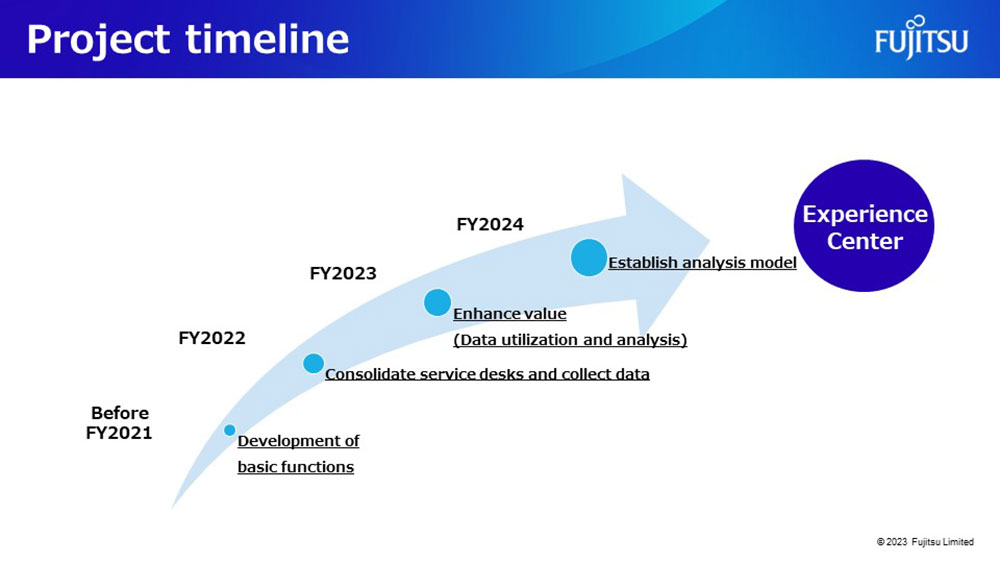
In the future, we plan to strengthen the collaboration between the global group companies, which has already introduced the service, and to leverage ServiceNow ITSM Pro for automated IT support using virtual agents and AI chatbots. “By promoting these initiatives, we hope to achieve a proactive support situation where ‘an incident never occurs’,” she says eagerly.
Fujitsu is making progress in DX for internal IT support by introducing a new system – a commitment which will continue.
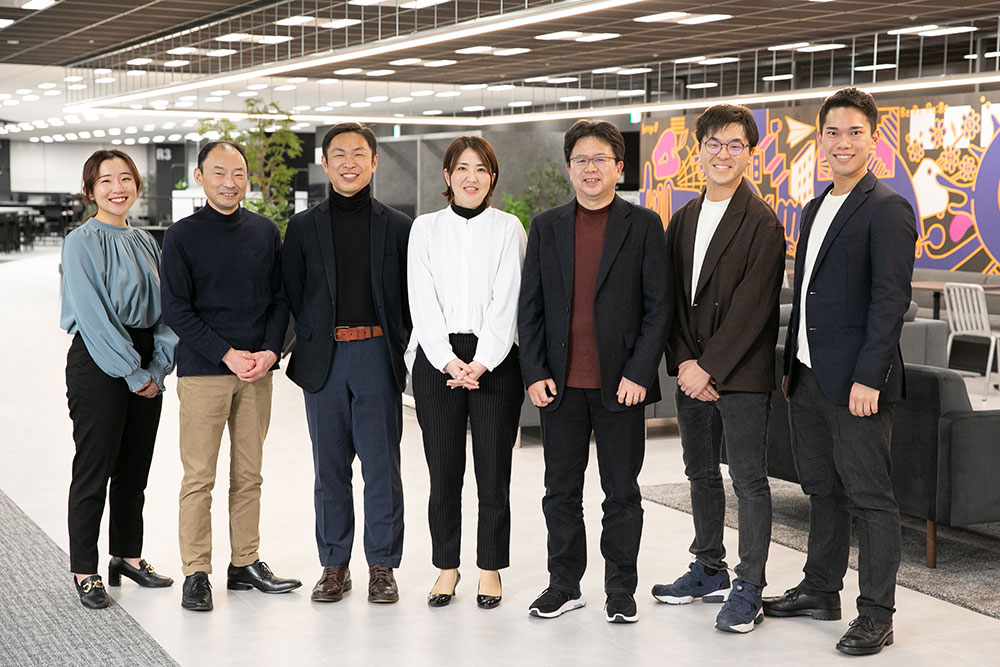
Take the first step toward sustainably transforming your business
Business Applications
Fujitsu introduced a key focus area called ‘Business Applications’ as a part of its business brand, Fujitsu Uvance.
Our world-class engineering, partner co-creation agile delivery is proven to create continuous value for enterprises and governments, worldwide.
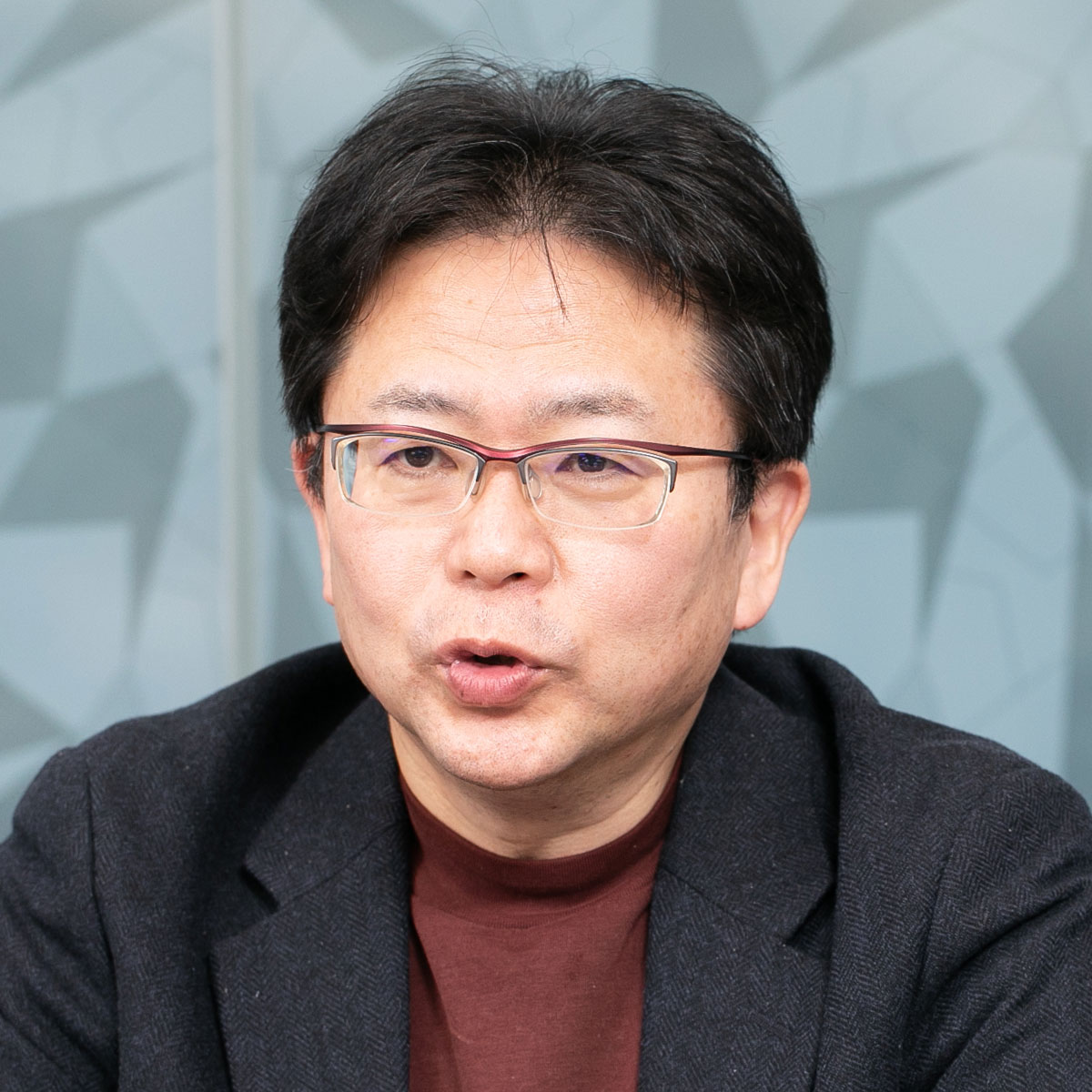
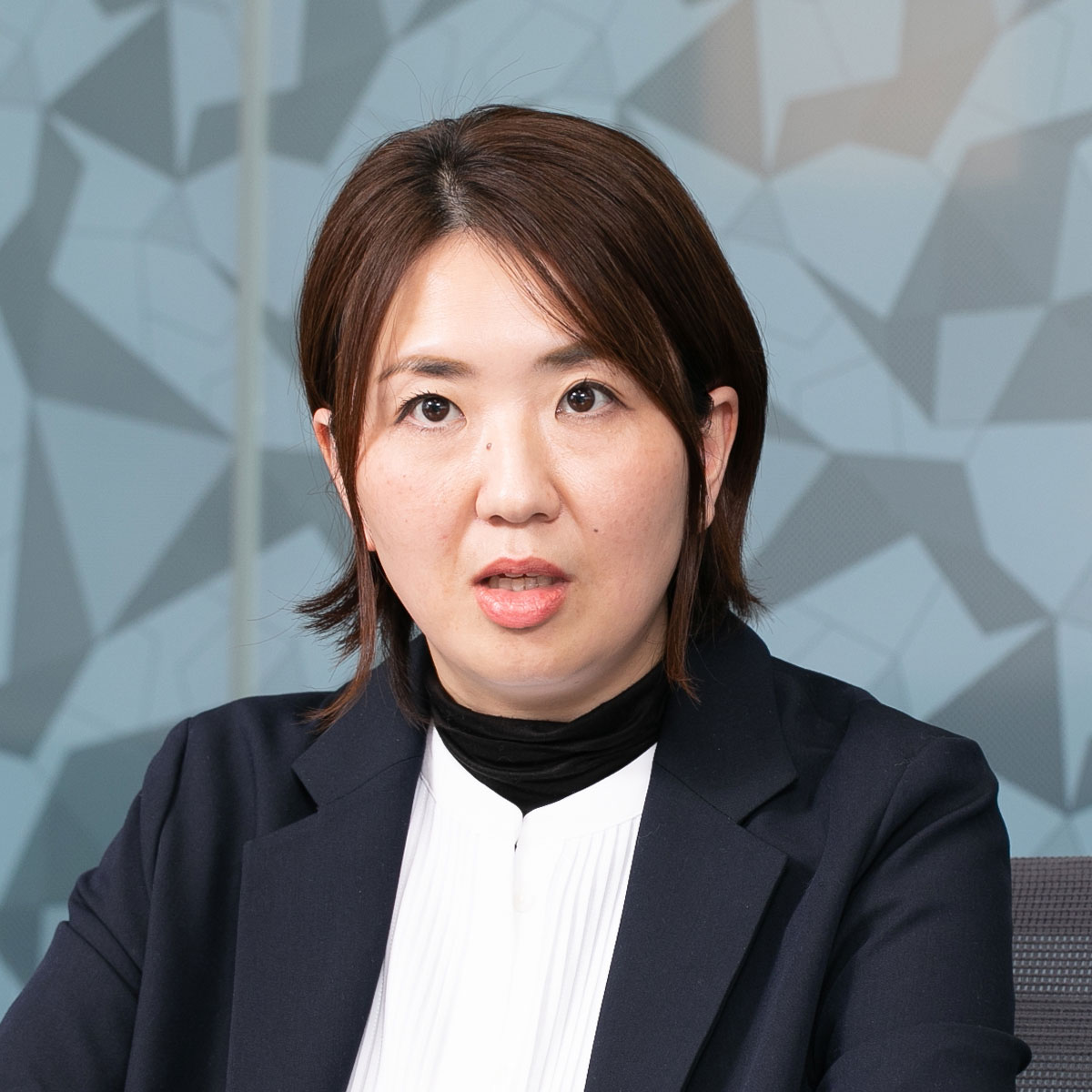
Related information
Editor's Picks





